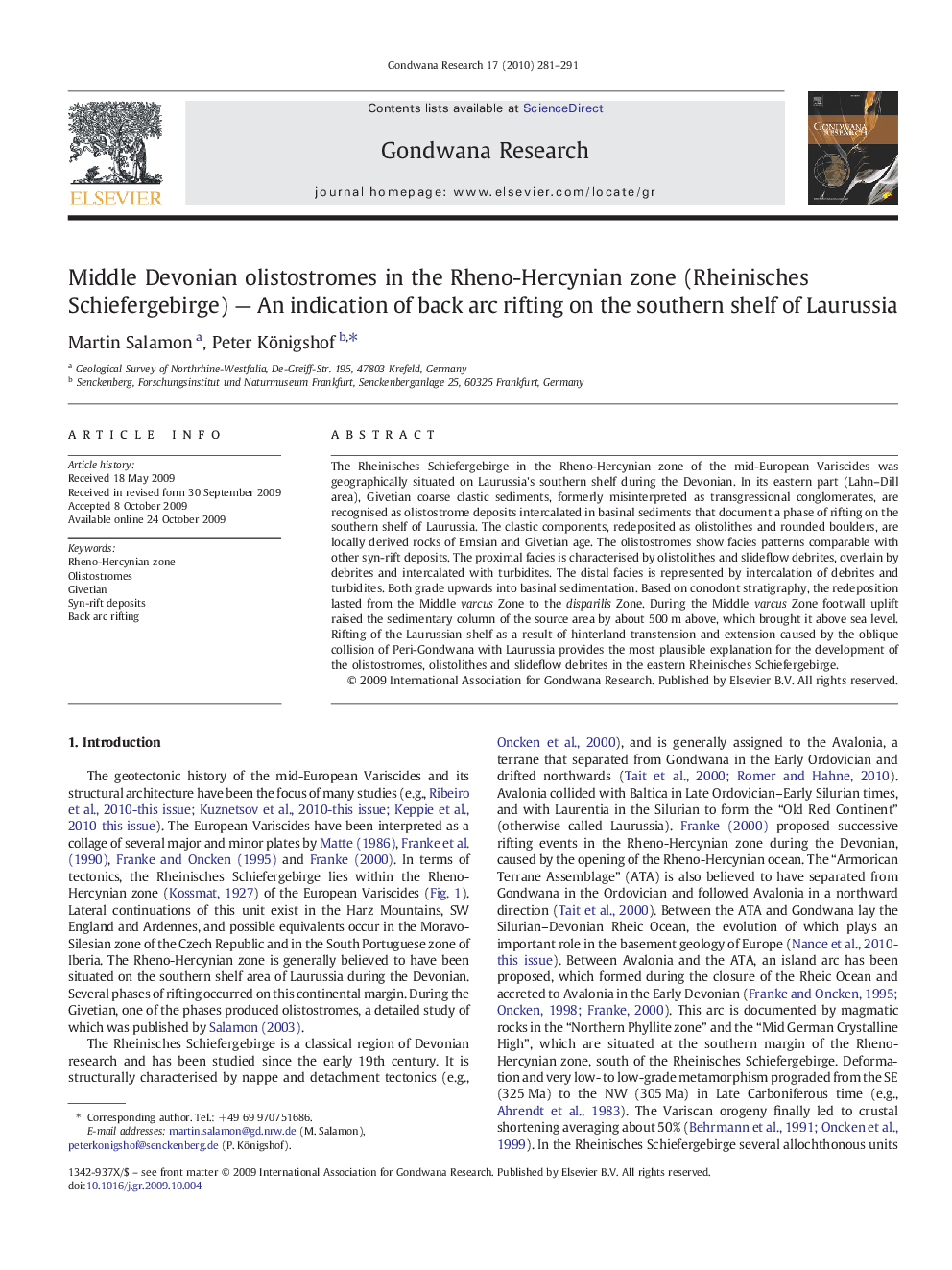| Article ID | Journal | Published Year | Pages | File Type |
|---|---|---|---|---|
| 4727231 | Gondwana Research | 2010 | 11 Pages |
Abstract
The Rheinisches Schiefergebirge in the Rheno-Hercynian zone of the mid-European Variscides was geographically situated on Laurussia's southern shelf during the Devonian. In its eastern part (Lahn-Dill area), Givetian coarse clastic sediments, formerly misinterpreted as transgressional conglomerates, are recognised as olistostrome deposits intercalated in basinal sediments that document a phase of rifting on the southern shelf of Laurussia. The clastic components, redeposited as olistolithes and rounded boulders, are locally derived rocks of Emsian and Givetian age. The olistostromes show facies patterns comparable with other syn-rift deposits. The proximal facies is characterised by olistolithes and slideflow debrites, overlain by debrites and intercalated with turbidites. The distal facies is represented by intercalation of debrites and turbidites. Both grade upwards into basinal sedimentation. Based on conodont stratigraphy, the redeposition lasted from the Middle varcus Zone to the disparilis Zone. During the Middle varcus Zone footwall uplift raised the sedimentary column of the source area by about 500Â m above, which brought it above sea level. Rifting of the Laurussian shelf as a result of hinterland transtension and extension caused by the oblique collision of Peri-Gondwana with Laurussia provides the most plausible explanation for the development of the olistostromes, olistolithes and slideflow debrites in the eastern Rheinisches Schiefergebirge.
Keywords
Related Topics
Physical Sciences and Engineering
Earth and Planetary Sciences
Geology
Authors
Martin Salamon, Peter Königshof,
